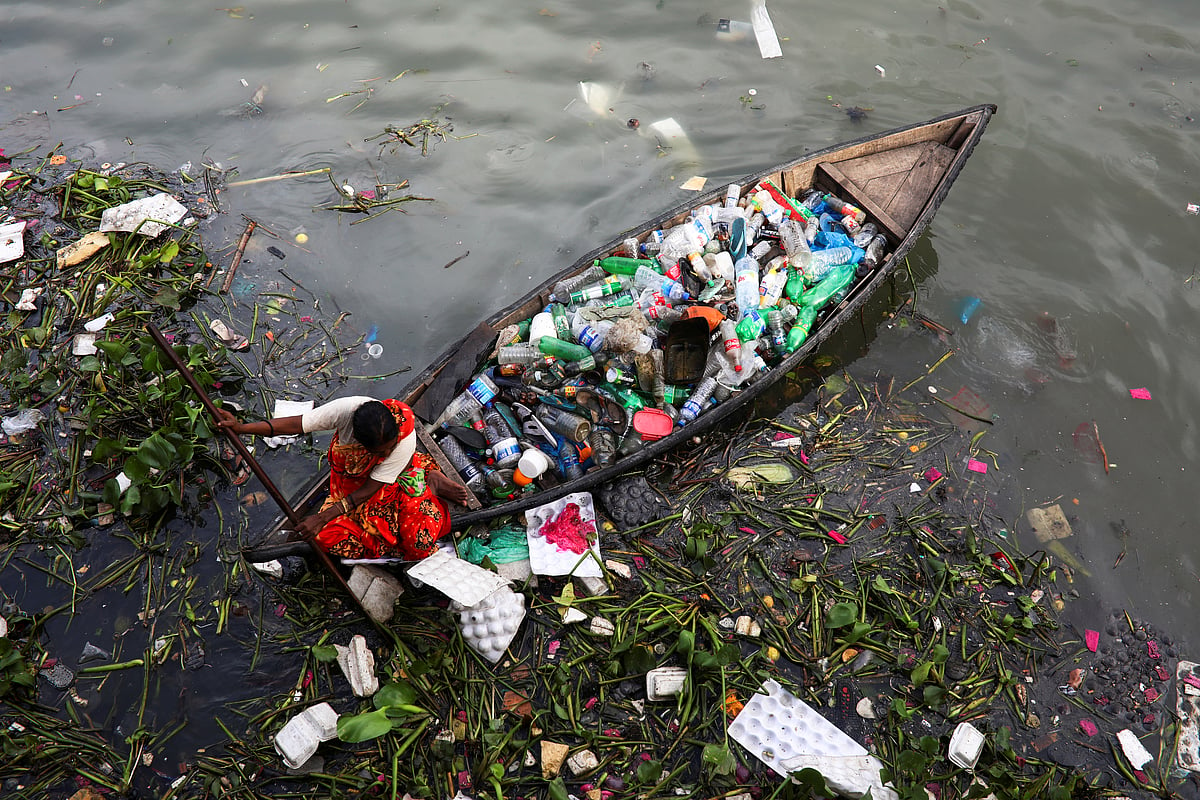
Waste: Threat or resource?
The word ‘waste’ connotes something that is unwanted or unusable, something that has ceased to exist after we have finished using it. Once used up-whether it be the stack of old newspapers, the candy wrapper, the torn t-shirt or the broken mobile phone- it is just trash. As if its story has been fully told. But material goods don’t just disappear; their environmental impact lingers. And therein lies the problem.
Waste has been adding to the landfills, turning them into looming mountains of trash. Fast fashion is piling up in the desert, unwanted. The oceans are floating garbage patches and the plastics in rivers, waterways and oceans are a particularly growing urgent problem. It is clear that we are not managing our waste well.
Poorly managed waste is leading to multiple problems such as clogging of drains leading to flooding and transmission of diseases. Then, there is the burning of the waste, which is increasing the respiratory problems. Even, the animals are affected as they consume the waste unknowingly. We already need huge commitments of finances to drive a global clean-up of the billions of tons of legacy waste in the environment.
But this is just the beginning. Every year, the world generates 2.12 billion tonnes of waste; global waste is expected to grow to 3.40 billion tonnes by 2050, more than double the population growth over the same period. In South Asia alone, by 2050, total waste generation is expected to be more than double.
Most of the time, the waste management strategy is all about finding more land to dump the waste or to make a landfill. In countries having a high density of population and for island nations, this is hardly an option. Even if you could figure out where to put that much garbage, it’s going to leak dangerous greenhouse gases that contribute to climate change and leachate that will seep into the groundwater, posing a threat to the ecosystem and public health.
The changing consumption patterns and poor regulation and management is leading to a burgeoning waste problem and the alarm has been sounded. What should we do about the waste situation? There is clearly no simple and neat solution to the messy challenge; however, inaction is costing us dearly. Poorly disposed waste has significant health and environmental impacts; the cost of addressing these challenges is higher than investing in designing and operating a simple, adequate and effective waste infrastructure.
In the year 2022, the United Nations General Assembly proclaimed 30th March as the International Day of Zero Waste, to be celebrated annually. The message is that not only do we need to bolster the waste management globally; but also promote sustainable consumption and production patterns.
This requires a paradigm shift away from the make-use-waste principle of a linear economy and for the nations to embrace the circular principles of reduce-reuse-recycle. From looking at waste as a threat that is difficult to contain and that causes pollution of the air, water and soil to focusing on how it can be transformed into a resource for the economies. Like the example of the Indian city, Indore, where biomining has helped it to get rid of 13 lakh tonnes of legacy waste. The waste was segregated into recyclables that were sent for recycling, some of it was converted into fuel and the soil that was recovered was used for filling the site on the same ground.
We can no longer continue to think of waste as “out of sight, out of mind’. So, the next time you are ready to throw away something, spare a thought to where is this ‘away’?
But before that, we have to start at the beginning. We have to invest in designing products and materials that can be reused and recycled. We have to alter our consumption habits to reflect choices that are better for the environment; we have to use our stuff for longer (according to the theworldcounts.com, 99% of the stuff we buy is trashed within 6 months) and repurpose it to serve multiple purposes. When it cannot be used any longer, we need to segregate what we are throwing away into wet and dry, ensuring that the waste can be recycled and used again.
Financing waste management systems is a significant challenge; even as we start approaching waste as a resource, there are capital investments and operational costs that will require to be subsidized- a public-private partnership could prove efficient in such cases.
In the end, we need a a holistic and integrated approach to the waste problem. What is needed is a smart mix of social incentives, unambiguous legal policies and fiscal deterrents such as awareness on waste reduction; mandates for segregation and recycling and a "pay-as-you-waste" policy.
We can no longer continue to think of waste as “out of sight, out of mind’. So, the next time you are ready to throw away something, spare a thought to where is this ‘away’?
Sankalita Shome is the Chief Coordinator, Secretariat, Bangladesh Sustainability Alliance at BRAC. Her email is sankalita.shome@brac.net